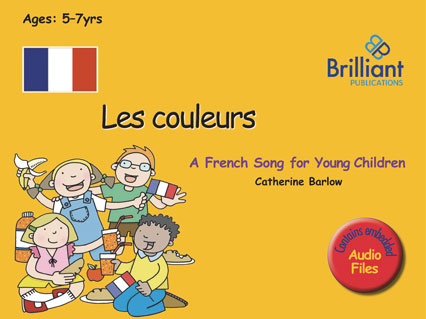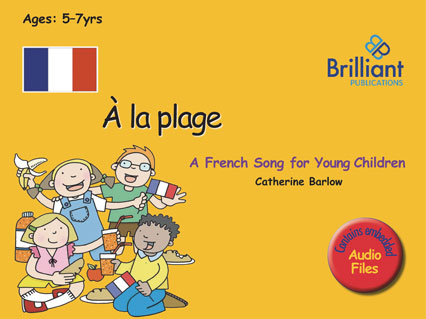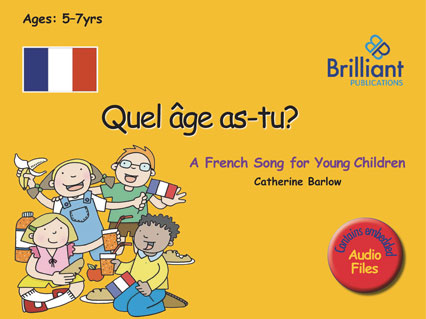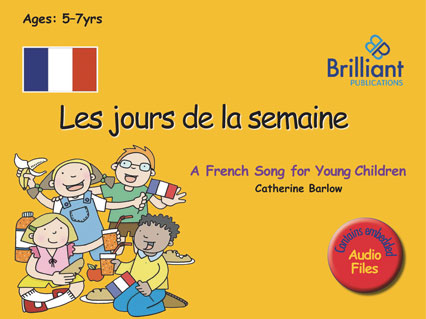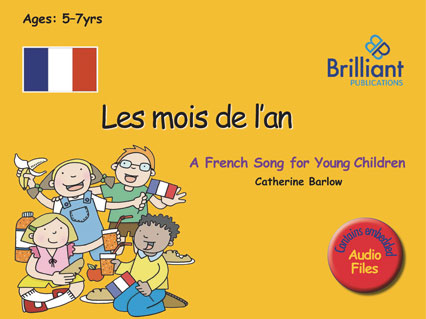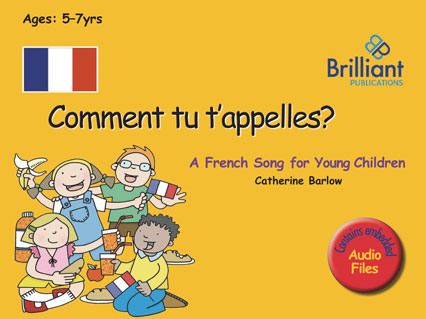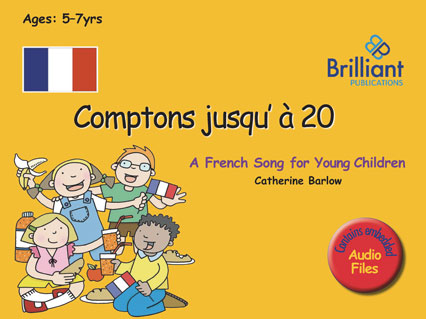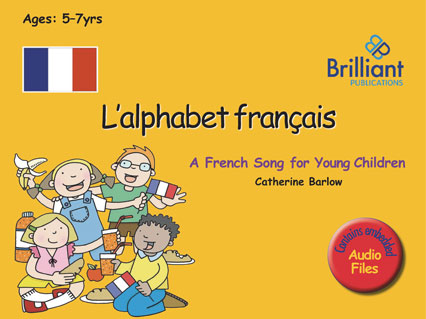513 results for “art”
We have found 513 results with the word you searched.
Les couleurs – A French song
Les couleurs is a French colours song for children. The song is to the tune of 'Frère Jacques' so it is easy to focus on the lyrics. Written by Catherine Barlow and published by Brilliant Publications. The PowerPoint has an embedded mp3 recording of the song, performed a native French speaker. The instrumental version enables karaoke performances. The e-resource contains the French lyrics, together with an English translation.
Add to basket ContinueÀ la plage – A French song
À la plage is a French rap song for children all about things to do at the beach. The repetition makes it fun and easy to learn. The rap introduces common French verbs such as faire, prendre and avoir in the first person. Written by Catherine Barlow and published by Brilliant Publications.
Add to basket ContinueQuel âge as-tu? – A French song
Quel âge as-tu? is a French song for children about ages and 'how old are you?'. The song is to the tune of 'Five little speckled frogs' so it is easy to focus on the lyrics. Written by Catherine Barlow and published by Brilliant Publications. The PowerPoint has an embedded mp3 recording of the song, performed a native French speaker. The instrumental version enables karaoke performances. The e-resource contains the French lyrics, together with an English translation. Children will love the attractive colouring sheet.
Add to basket ContinueLes jours de la semaine – A French song
This catchy and repetitive tune introduces children to the days of the week in French. To be sung to ‘Camptown races’ so it is easy to focus on the lyrics. Written by Catherine Barlow and published by Brilliant Publications. The PowerPoint has an embedded mp3 recording of the song, performed a native French speaker. The instrumental version enables karaoke performances. The e-resource contains the French lyrics, together with an English translation. Children will love the attractive colouring sheet.
Add to basket ContinueLes mois de l’an – A French song
Les mois de l'an is a French song for children about the months of the year. The song is to the tune of 'Ten green bottles' so it is easy to focus on the lyrics. Written by Catherine Barlow and published by Brilliant Publications. The PowerPoint has an embedded mp3 recording of the song, performed a native French speaker. The instrumental version enables karaoke performances. The e-resource contains the French lyrics, together with an English translation.
Add to basket ContinueComment tu t’appelles? – A French song
Comment tu t'appelles? is a French song for children all about asking and answering 'What's your name?' and saying how you are feeling. The song is to the tune of 'If you're happy and you know it' so it is easy to focus on the lyrics. Written by Catherine Barlow and published by Brilliant Publications. The PowerPoint has an embedded mp3 recording of the song, performed a native French speaker. The instrumental version enables karaoke performances. The e-resource contains the French lyrics, together with an English translation. The reproducible flashcards will help to introduce the vocabulary.
Add to basket ContinueComptons jusqu’à 20 – A French song
Comptons jusqu'à 20 is a French rap song for children all about counting numbers to 20. The repetition makes it fun and easy to learn. Written by Catherine Barlow and published by Brilliant Publications. The PowerPoint has an embedded mp3 recording of the song, performed a native French speaker. The instrumental version enables karaoke performances. The e-resource contains the French lyrics, together with an English translation. Children will love the attractive colouring sheet.
Add to basket ContinueBonjour! – A French song
Bonjour! is a French greetings song for children. The song is to the tune of 'London's burning' so it is easy to focus on the lyrics. Written by Catherine Barlow and published by Brilliant Publications. The PowerPoint has an embedded mp3 recording of the song, performed a native French speaker. The instrumental version enables karaoke performances. The e-resource contains the French lyrics, together with an English translation. Children will love the attractive colouring sheet.
Add to basket ContinueL’alphabet français – A French song
L'alphabet français is a French alphabet song for children. It is sung to the traditional alphabet song tune so it is easy to focus on pronouncing the French letters correctly. Written by Catherine Barlow and published by Brilliant Publications. The PowerPoint has an embedded mp3 recording of the song, performed a native French speaker. The instrumental version enables karaoke performances. The e-resource contains the French lyrics, together with an English translation. Children will love the attractive colouring sheet.
Add to basket ContinueWhat if?
Life is an accumulation of choices. The age-old ‘what if?’ tends to crop up most when we are rethinking a choice we have made, usually when we are not certain that we are happy with the consequences. Here, Emma makes a choice that contradicts her moral standing and experiences feelings of regret, guilt, and fear that she struggles to cope with. When the most popular girl in school: Narinder, makes an effort to be friendly with Emma, she is flattered. Flattery morphs into excitement when Narinder invites Emma to her house one Saturday and, desperate to impress her new buddy, Emma collects a few of her family’s prized possessions to take with her. This choice becomes a source of trauma as unbeknownst to Emma, Narinder’s cheeky brothers have swapped her family’s lovely things with their own shabby versions leading her to believe she has ruined everything:- the items she has taken, her family’s view of her, and her friendship with Narinder. Ultimately. Emma feels like a fraud. This primary school assembly story about impressing others is taken from More Brilliant Assembly Stories written by Elizabth Sach and published by Brilliant Publications.
Add to basket Continue
